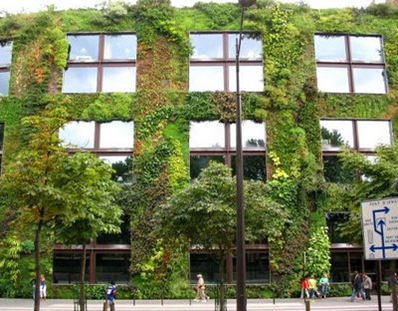We all know we need to make our roads and cities ‘greener’ for a sustainable future, but there seem to be endless debates over how to achieve that goal.

A new study suggests a pretty simple solution – turn the roads green, literally! According to research published last week, planting trees, bushes, and other greenery at street level to create so-called ‘green walls’ could reduce pollution by up to 30 per cent.
Most of the pollution we are exposed to is generated at street level, so introducing vegetation to the ‘urban canyons’ (that’s streets, to you and me) found in towns and cities helps to filter nitrogen dioxide and microscopic particulate matter and deliver cleaner air right where we need it.
Green walls were shown to be more effective for reducing pollution than planks in parks or on rooftops, because pollution tends to get trapped and concentrated in and among the urban canyons. Even trees planted by the roadside only have a limited use in areas of low pollution, as they risk preventing the pollution from escaping narrow streets.
The researchers behind the study from the University of Birmingham’s School of Geography, Earth and Environmental Sciences said that until now intiatives aimed at reducing pollution have taken a top-down approach, but a grass roots approach (excuse the pun) of building green walls in hotspots could be a relatively easy way of taking control of acute problems at the local level.